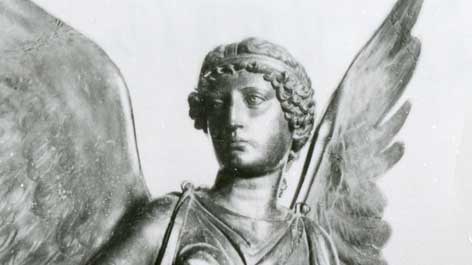Lost sculpture from the Antikensammlung rediscovered in Russia
News from 12/28/2016
The Calvatone Victory was displayed until 1939 in the Altes Museum on Berlin’s Museumsinsel and has been missing since the end of the war. Recently, it has been found in St. Petersburg, thanks to the work of researchers.

The discovery was announced in an article in the scholarly journal of the St Petersburg State Hermitage Museum. A copy of the article was presented in advance to the Stiftung Preußischer Kulturbesitz (Prussian Cultural Heritage Foundation) by colleagues at the Hermitage. According to the article, the Victoria was mistakenly inventoried as a French 17th century sculpture when it arrived at the Hermitage in 1946. For many years it was kept in the museum’s secret storage facility and it has only recently become possible to identify it. Thanks to research carried out in the Hermitage archives and scientific analysis of the statue for conservation purposes, Russian specialists were able to catalogue the object correctly and announce that it was one of the cultural assets relocated from the Berlin museums as a result of the war.
The President of the Stiftung Preußischer Kulturbesitz, Hermann Parzinger, and the Director of the Hermitage, Michail Piotrowskij, have agreed to collaborate on the study and restoration of the sculpture.
Parzinger thanked his Russian colleagues for their transparent research: “The Hermitage and the Staatliche Museen zu Berlin have maintained good professional relations over many years and have successfully carried out numerous joint projects, including some involving cultural assets displaced as a result of the war, a recent example being the exhibition, ‘The Bronze Age: Europe without Borders’. Our scientific cooperation on the Calvatone Victoria sculpture will mark another milestone in an outstanding record of collaboration based on mutual trust.”
Michail Piotrowskij said: “The Hermitage and German museums have developed a successful approach to scientific collaboration, even in sensitive areas, and it is one which we will continue to pursue in the Calvatone Victoria project.”

